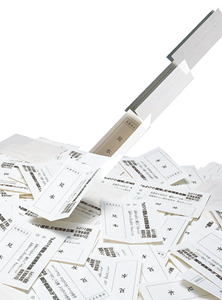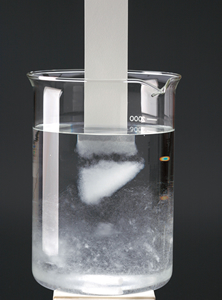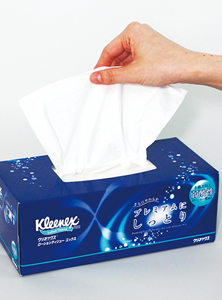niponica is a web magazine that introduces modern Japan to people all over the world.
2016 No.18
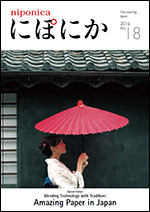
To read the e-book you need to have JavaScript enabled in your browser and a free Flash Player plug-in from Adobe Systems Inc. installed.
Amazing Paper in Japan

High-Tech Paper:
Bringing Convenience to People’s Lives
Paper is used in every aspect of daily life, and in Japan the race is on to develop technologies for new types of paper that offer even greater freedom and convenience.
Photos: Fukunaga-Print Co., Ltd., Musashi Co., Ltd., Nippon Paper Papylia Co., Ltd., Nippon Paper Crecia Co., Ltd., Shibataya Kakoshi Co., Ltd., Mitsubishi Pencil Co., Ltd., and the Laboratory of Professor Isogai at The University of Tokyo, PIXTA
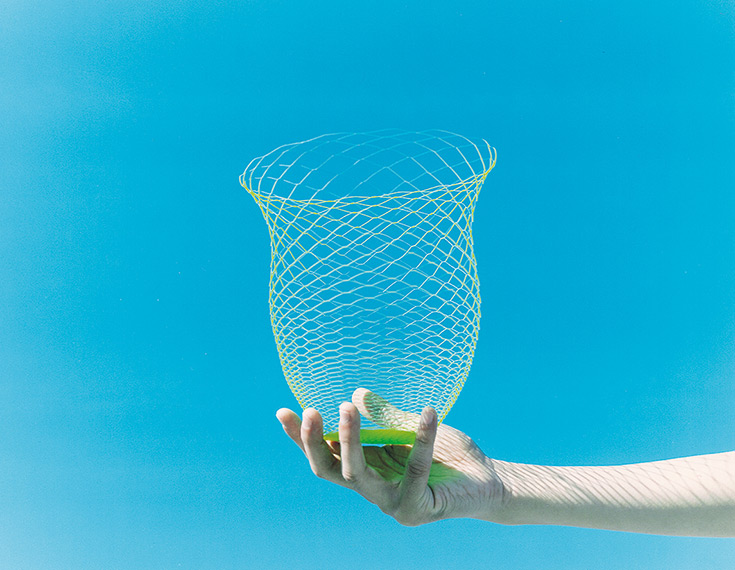
A world of possibilities: Paper processing and special types of paper
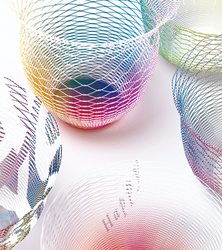
The “air vase” is the result of highly advanced diecutting techniques and superlative design. It was born during the Kami no Kousakujo Project launched by the company Fukunaga-Print Co., Ltd. and collaborating creators. (Photos: Tomita Satomi, Tatsumi Yosuke (healthy))
Here are some highly unusual products you might not believe are made of paper, until you look closely. They come from a small printing company in the Tokyo suburbs specializing in paper processing techniques like punch cutting and intricate folding methods. The company is getting plenty of attention for its stunning “air vases,” manufactured in collaboration with outsourced creators. They seem to float in air and show an ever-changing shape. Each one is made from a single sheet of paper, cut in an extraordinarily delicate manner which looks like a beehive. Before succeeding with a finished product, the company’s dedicated artisans used their intuition to make more than a hundred prototypes during a project that began with manufacturing metal dies and ended with punch-cut paper strands with thicknesses in the 0.01 mm range.
Another project pursued by the company, this one in collaboration with an architect, came up with 1/100 scale model kits containing miniature paper parts. The kits have taken the model-making hobby industry to a new level, and are now commercially viable thanks to painstaking and attention-to-detail punch cutting techniques.
Japan’s ancient papermaking traditions are alive today in techniques used to make a special product called synthetic paper. One type has a surprising role on voting day. When the ballot is folded and dropped in the ballot box, something strange happens inside the box—the ballot opens up by itself. This makes ballot counting a lot easier and leads to faster election result announcements. The ballots are printed on YUPO Synthetic Papers®, which are a type of film material made primarily from polypropylene. It looks like paper and feels like it, too. In the early development stage it was too smooth, but this problem was soon eliminated, making it easy to write on, even with a pencil. The same manufacturer has developed a machine to automatically read which candidate the voter has chosen, and this too has helped create a highly advanced election system.
Paper diapers and other high-quality sanitary products include an advance you would naturally expect to come from Japan, in the form of improved tissue paper. The paper includes glycerol and other substances for a moisturizing effect and has a soft, gentle touch, a blessing when blowing your nose a lot during a cold or pollen allergy reaction. The paper hit the market about 20 years ago, and now offers many types of moisturizing ingredients, including menthol, hyaluronic acid and collagen. Many women use it as part of their makeup set.
And then there is a paper that rapidly breaks down when moistened with water. It was developed by shortening the bonds between paper fibers to a minimum. The disintegration speed is far greater than what one could expect from ordinary toilet paper—the new paper simply vanishes in water, making it is an excellent choice for sowing seeds in bags in the ground, for paper lanterns set afloat on a river, and for other purposes requiring the paper to disappear. It also demonstrates the future possibilities of paper.

A miniature world of paper created through a combination of the design ingenuity of architect Terada Naoki and the innovative die-cutting techniques of Fukunaga-Print Co., Ltd. Precision-cut pieces of paper come together to form a 1/100 scale model of a scene during the cherry blossom season. The scene measures 103 x 148 mm. (Terada Mokei and Fukunaga-Print Co., Ltd. Photo: Masunaga Kenji)
When voters fold their ballots and push them into the ballot box, the ballots open up by themselves inside the box. Ballot paper sold by Musashi Co., Ltd.
The paper breaks down as soon as it is soaked in water. Water-soluble paper made by Nippon Paper Papylia Co., Ltd.





